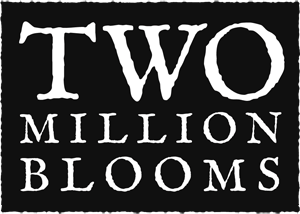What is so special about Two Million Blooms raw honey?
Two Million Blooms honey is derived from the work of local bees visiting local flowers in Champaign-Urbana. Our honey is raw (unheated and unfiltered) and sustainably-harvested from treatment-free hives—to keep the good stuff in and the crazy chemicals out. The result is an unadulterated and flavorsome product. Shop now.
My honey is beginning to crystallize. What does this mean?
In short, it means you’ve got the real thing! Given enough time, all honey will crystallize. But raw honey tends to crystallize sooner than commercially-processed honey, which is heated and filtered. Crystallization does not mean the quality has diminished, nor does it affect the honey’s flavor. To re-liquify, gently heat the container in a warm water bath and store at room temperature. Learn more about “What Happened to My Honey?!”
What is raw honey?
Raw honey is not heated or filtered. It contains live enzymes, pollen, propolis and floral aromas the honey bees put into it. As a result, raw honey’s color, flavor, and texture can vary greatly depending on the floral source and weather.
Is your honey filtered?
No, our honey is only coarsely-strained, to remove bee parts and larger particles of wax cappings. This ensures our product retains all of the natural and beneficial enzymes, pollen, propolis, and other vitamins and minerals.
Why is most honey filtered?
In the U.S., the majority of honey sold at retail has been heated then filtered (or ultra-filtered) for several reasons:
- To improve clarity. Clear honey is considered more desirable to most consumers. In fact, the USDA gives higher grades for honey with good clarity. Our honey could not pass for Grade A Fancy because of the particle content, but we’re okay with that—it’s not a beauty contest.
- To delay granulation/crystallization. Many consumers believe crystallized honey has gone bad. As such, U.S. standards allow honey to be “filtered to the extent that all or most of the fine particles, pollen grains, air bubbles, or other materials normally found in suspension, have been removed.” Fine-filtering, allows supermarket honey to remain liquid for a longer period.
- To disguise it’s origin. Pollen is a determinate of the honey’s botanical and geographical region and acts as a built-in country-of-origin label. Honey filtration is used as a means to disguise country of origin, as is the case for Chinese suppliers whose honey has been banned in the U.S.
Is your honey heated?
No, heat kills off beneficial live enzymes and destroys delicate flavor and aroma—the things that make honey, honey.
Why is honey heated?
Heating honey (used by both small and large honey producers alike) is used for several reasons:
- To decrease viscosity / increase the rate of flow for processing as it is pumped through filters under high pressure, and for quicker bottling.
- To delay the process of crystallization by dissolving any sugar crystals which may be present.
- To reduce the possibility of fermentation. (Pasteurization typically involves the heating of a substance to a temperature which is lethal to harmful microbes (mainly bacteria). However, honey’s high sugar and acidity and low moisture already inhibit the growth of bacteria, so pasteurization is not done for that purpose.) The high heat of honey pasteurization is used to kill yeasts (which can reproduce if the moisture is above 18%), but it also destroys the healthful amino acids, enzymes, flavor, and aroma.
Do you use any chemicals in your apiaries?
We are committed to sustainable, treatment-free beekeeping do not use any of the widely-used in-hive treatments which are known to contaminate honey, wax, and have sub-lethal effects on honey bees and their larvae.
Is your honey organic?
Currently, to be “certified organic,” products must meet the USDA organic standards. However, the USDA has yet to finalize any specific requirements for organic honey. Until then, their recommendations (dated 2010) recommend a two mile radius for organic forage, but know that honey bees can forage well beyond for nectar and pollen. This means “organic” honey isn’t much of a reality in the U.S., except for bees located in remote locations such as a national forest or the mesquite forests of Hawaii. The U.S. does import organic honey from Brazil, India, and Mexico, but there are plenty of reasons to be skeptical of its quality. We believe the best honey you can get is local, where you can ask the beekeeper about his or her management practices and what forage is available to the bees.
